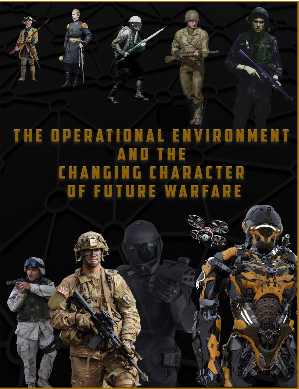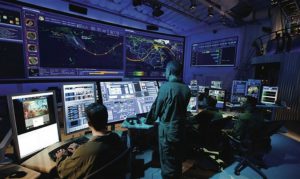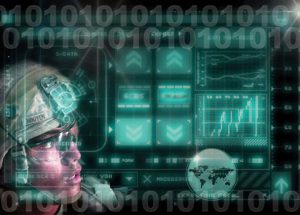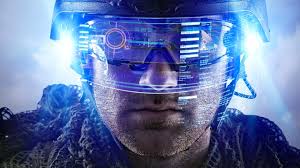(Editor’s Note: Mad Scientist Laboratory is pleased to present the following guest blog post by Dr. Richard Nabors, Associate Director for Strategic Planning and Deputy Director, Operations Division, U.S. Army Research, Development and Engineering Command (RDECOM) Communications-Electronics Research, Development and Engineering Center (CERDEC), addressing how the proliferation of sensors, integrated via the Internet of Battlefield Things [IoBT], will provide Future Soldiers with the requisite situational awareness to fight and win in increasingly complex and advanced battlespaces.)
“As in preceding decades, that which can be found, if unprotected, can still be hit. By mid-Century, it will prove increasingly difficult to stay hidden. Most competitors can access space-based surveillance, networked multi-static radars, drones and swarms of drones in a wide variety, and a vast of array of passive and active sensors that are far cheaper to produce than to create technology to defeat them. Quantum computing and quantum sensing will open new levels of situational awareness.  Passive sensing, especially when combined with artificial intelligence and big-data techniques may routinely outperform active sensors. These capabilities will be augmented by increasingly sophisticated civilian capabilities, where commercial imagery services, a robust and mature Internet of Things, and near unlimited processing power generate a battlespace that is more transparent than ever before. — The Operational Environment and the Changing Character of Future Warfare
Passive sensing, especially when combined with artificial intelligence and big-data techniques may routinely outperform active sensors. These capabilities will be augmented by increasingly sophisticated civilian capabilities, where commercial imagery services, a robust and mature Internet of Things, and near unlimited processing power generate a battlespace that is more transparent than ever before. — The Operational Environment and the Changing Character of Future Warfare
 The complex operational environment of the next conflict cannot be predicted accurately. It has become a battlespace — jungle, forest, city, desert, arctic and cyber — where the enemy is already entrenched and knows the operational environment. Complex and congested environments level the field between the United States and its adversaries. The availability of integrated sensor networks and technologies will be a critical factor in piercing the complexity of these environments and determining what level of military superiority is enjoyed by any one side.
The complex operational environment of the next conflict cannot be predicted accurately. It has become a battlespace — jungle, forest, city, desert, arctic and cyber — where the enemy is already entrenched and knows the operational environment. Complex and congested environments level the field between the United States and its adversaries. The availability of integrated sensor networks and technologies will be a critical factor in piercing the complexity of these environments and determining what level of military superiority is enjoyed by any one side.
 As Soldiers in complex operational situations are presented with significantly more information than in the past and in a broader variety; they have the need to quickly and decisively adapt to the changing situation, but often do not have the time to sort and judge the value of the information received.
As Soldiers in complex operational situations are presented with significantly more information than in the past and in a broader variety; they have the need to quickly and decisively adapt to the changing situation, but often do not have the time to sort and judge the value of the information received.
Integrated sensor technologies will provide situational awareness by:
 • Collecting and sorting real-time data and sending a fusion of information to the point of need by enhancing human vision,
• Collecting and sorting real-time data and sending a fusion of information to the point of need by enhancing human vision,
• Integrating with computers to detect and identify items of interest in real-time,
• Using augmented reality to overlay computer vision with human vision, and
• Fusing data together from multiple sensor sources.
Networks of sensors integrated with autonomous systems will work autonomously to support local operations as well as converge and diverge as needed, accelerating human decision-making to the fastest rates possible and maximizing the U.S. military’s advantage.

Expected advances in Army sensing capabilities will directly address operational vulnerabilities in future environments, including intelligence, surveillance and reconnaissance (ISR) by a concealed enemy, and poor visibility and short lines of sight in urban environments. These sensors will provide local ISR by collecting, sorting, and fusing real-time data and sending it to the point of need, expanding the small units’ ability to sense the adversary, and providing an understanding of the operational environment that the adversary lacks.
There are several technical challenges that are being addressed in order to maintain and secure overmatch capabilities. These include:
• Fusion of disparate sensors into a combined capability.
• Tactical computing resources.
• Network connectivity and bandwidth.
• Sensor suitability for environmental observation.
• Reduced power requirements.
• Tailored, individual mechanisms through “sensored” Soldiers.
• Disguised unmanned systems to gather and communicate intelligence.
Future research will focus on automation that could track and react to a Soldier’s changing situation by tailoring the augmentation the Soldier receives and by coordinating across the unit. In long-term development, sensors on Soldiers and vehicles will provide real-time status and updates, optimizing individually tailored performance levels. Sensors will provide adaptive camouflage for the individual Soldier or platform in addition to reactive self-healing armor. The Army will be able to monitor the health of each Soldier in real-time and deploy portable autonomous medical treatment centers using sensor-equipped robots to treat injuries. Sensors will enhance detection through air-dispersible microsensors, as well as microdrones with image-processing capabilities.

In complex environments, the gathering and fusion of information will lead to greater understanding. Integrated sensors, remote and near, manned and unmanned, can both save Soldiers’ lives and make them more lethal.
Read about how Russia is trying to increase its number of electro-optical satellites in the OE Watch November 2017 issue (page 17).
Listen to Modern War Institute‘s podcast where Retired Maj. Gen. David Fastabend and Mr. Ian Sullivan address Technology and the Future of Warfare.
Dr. Richard Nabors is Associate Director for Strategic Planning, US Army CERDEC Night Vision and Electronic Sensors Directorate.



Aside from monitoring Soldier status, what do the writer or the community at large believe soldier borne sensors could sense? Proximity to other soldiers, environmental conditions, etc. . .